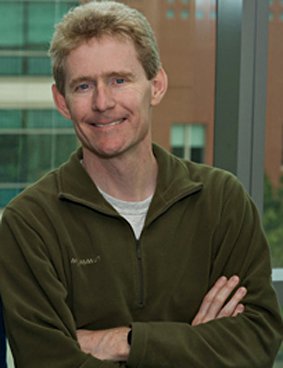
At a recent scientific meeting for researchers working with DNA sequencing tools, Joe DeRisi from the University of California, San Francisco, gave a riveting presentation about the medical case of a young boy with acute encephalitis. The talk offered a glimpse into the tremendous clinical potential for DNA sequencing—and simultaneously highlighted just how far this technology still is from the mainstream.
DeRisi is known for a major coup in 2003 when he led the first American team to identify SARS. At the time, the coronavirus was still an unknown terror sweeping across Asia.
His lab focuses on identifying pathogens, which is how DeRisi got involved in the case of the young boy with encephalitis. The patient had been in and out of the hospital at the University of Wisconsin at Madison for months; his symptoms escalated as test after test came back negative and no treatment worked. Eventually, one Wisconsin physician reached out to DeRisi’s team, which sequenced a DNA sample from the patient. They stripped out the boy’s own DNA. When they tested what was left, they found the bacteria responsible for leptospirosis, a severe infection transmitted by contaminated water. After two weeks of penicillin, the standard treatment for leptospirosis, the patient made a full recovery.
As people weigh the pros and cons of doctors’ using DNA sequencing for diagnosis, this story illustrates some key points. First, the entire procedure to sequence and analyze the DNA sample took just two days, after the patient had spent weeks in the hospital enduring countless expensive and fruitless procedures. Second, since DeRisi’s lab is not approved for clinical-grade testing, the sequencing results still had to be validated using the standard confirmatory test for leptospirosis. That test came back negative, even though other technologies eventually validated the leptospirosis diagnosis. Even if the Wisconsin doctors had tested for leptospirosis using something other than DNA sequencing, then, they would likely have missed it.
Perhaps the most important element, though, is how this story got its happy ending. DeRisi’s lab was collaborating on a separate project with one of the Wisconsin physicians; it was essentially only serendipity that led the doctor to think of reaching out to DeRisi as his patient’s situation grew dire.
Recent news stories similarly underscore that genome sequencing is still far from a standard treatment that can routinely benefit average people: the hedge fund banker who started up a biotech company to find a cure for his son’s disease, or the Silicon Valley entrepreneur who spent 10 years knocking on doors and performing his own genetic studies to find a diagnosis for his daughter’s syndrome.
A number of factors must change before genome sequencing makes it way to the clinical mainstream. Health insurers need to crunch the numbers to determine where and when DNA sequencing saves money. In the case of the Wisconsin boy, it certainly seems that sequencing sooner could have saved thousands of dollars. On the technology front, DNA sequencers must be approved for clinical use so that hospitals can run their own instead of relying on research labs like DeRisi’s. While this is starting to happen, progress is slow because of the need for complicated compliance with regulatory requirements. Also, companies must build better analysis tools to DNA sequence results, home in on relevant information, and distill it into something useful for doctors. At present, this kind of analysis is still so difficult that it is usually performed by teams of scientists with advanced computational and biological expertise.
Eventually hospitals will routinely use genome sequencing in the treatment of patients. But it will take many years at the current rate of progress. Yet these early success stories suggest that the potential for saving lives and improving treatment outcomes is so great that all of us should hope it happens sooner.
DNA Diagnosis Works, But It’s Not Likely to Cure You Soon
At a recent scientific meeting for researchers working with DNA sequencing tools, Joe DeRisi from the University of California, San Francisco, gave a riveting presentation about the medical case of a young boy with acute encephalitis. The talk offered a glimpse into the tremendous clinical potential for DNA sequencing—and simultaneously highlighted just how far this technology still is from the mainstream. DeRisi is known for a major coup in 2003 when he led the first American team to identify SARS. At the time, the coronavirus was still an unknown terror sweeping across Asia. His lab focuses on identifying pathogens, which is how DeRisi got involved in the case of the young boy with encephalitis.

















